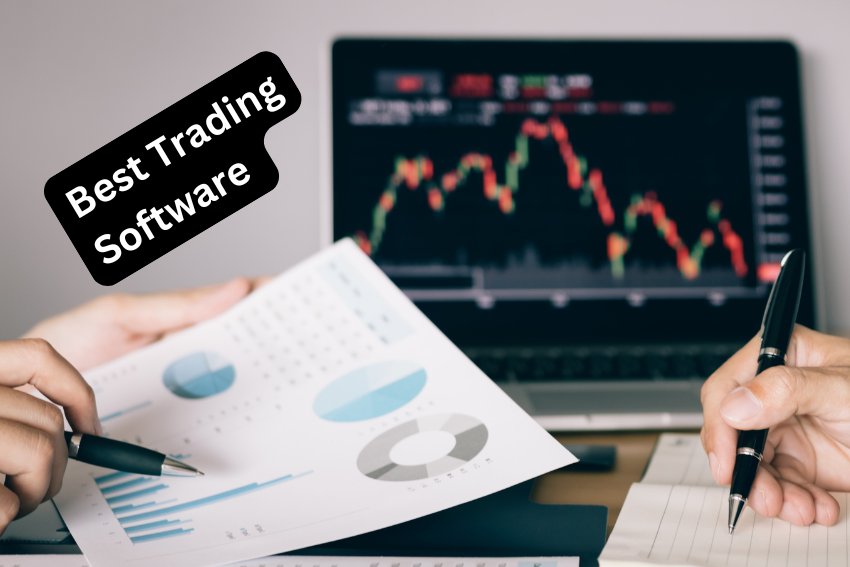The global financial markets are a multi-trillion-dollar market with varying financial instruments that investors use to gain exposure and to squeeze out returns. Financial instruments are simply assets that provide the efficient flow and transfer of capital, consequently enabling investors to generate returns over the long run.
While financial instruments can be real or virtual documents acting as an agreement between a buyer and seller, they represent a form of monetary value. Financial instruments can also be divided into a variety of asset classes, which can either be equity-based or debt-based. To put it into perspective, equity-based financial instruments represent ownership of the asset, while a debt-based financial instrument represents a loan which has been made by an investor to the rightful owner of the asset.
Here, we have compiled a list of the most popular financial instruments that investors use to gain exposure to the broader financial markets.
Exchange-Traded Funds
Exchange-Traded Funds (ETFs) are an investment fund which is traded on stock exchanges. The popularity of ETFs continues to soar as investors view this financial instrument as easy to trade, and as a result of their broad coverage, they enable investors to easily diversify their investment portfolios.
ETFs stand out as they allow investors to gain exposure to a pool of stocks spread across various sectors, instead of investing in only one stock. ETFs operate by tracking the performance of an underlying index, such as the S&P 500 or the Dow Jones. There are also ETFs in the market that track stocks from emerging markets as well as those that follow stocks in individual business sectors, such as agriculture and biotechnology. Also, some ETFs track commodities.
As stated, ETFs are traded on the stock exchanges the same way as normal stocks. However, unlike stocks, they are not subject to extreme levels of volatility since they track the performance of several stocks. That is, one stock underperforming in the market, would most of the time be offset by the pool of other stocks that are performing.
Exchange-Traded Notes
Exchange-Traded Notes (ETNs) share similarities with Exchange Traded Funds as they are traded on major exchanges and track underlying indexes. ETNs are debt securities that have the same traits as bonds but do not pay interest. Instead, the price of an ETN will fluctuate in the same way that stock prices fluctuate. Upon maturity, ETNs pay returns of the index they track, less the relevant fees charged by the financial institution. When it comes to trading ETNs, investors make money on the price difference between the buy and sell prices of the ETN, less any fees.
Cryptocurrencies
Cryptocurrencies are the latest addition in the broader financial market. As cryptocurrencies become increasingly popular, so are many brokers adding support to this new asset class. Similarly, investors are increasingly buying and selling digital currencies, all in the effort of benefiting from the price difference.
In the financial markets, cryptocurrencies trade the same way as currency pairs but with extreme levels of volatility. Similarly, it is common to find investors trading the likes of BTC/USD or ETH/USD in the same way they would trade fiat currency pairs, such as the GBP/USD or USD/JPY.
Bonds
Bonds are some of the oldest financial instruments that provide a low-risk investment opportunity. This financial instrument represents a loan made by an investor to a borrower who issues a fixed interest rate to the lender over a given period in exchange for using the capital.
Bonds stand out on the fact that they provide a certain return on invested capital. Similarly, they are less volatile than other financial instruments. Since bond rates are determined by interest rates, they are often heavily traded when interest rates are raised by central banks or during periods of quantitative easing.
Treasuries
Treasuries are financial instruments issued by the federal government for raising money to fund various operations. The three major categories, based on their lengths of maturity, include treasury bonds, treasury notes, and treasury bills.
Operating in the same way as bonds, treasury bills come with different rates at which they mature, and they pay interest at different times Treasury bills stand out on the fact that they are based on the full faith and credit of a government. Likewise, investors are always guaranteed a high degree of safety and steady passive income in the form of interest payments. Upon maturity, treasuries return their face value.
Indices
Market indices are a special asset class that allows investors to gain exposure to a wide pool of securities. Some of the most popular market indices include the S&P 500 that tracks the performance of the top 500 companies in the U.S. Similarly, there is the Dow Jones Market Index, which lists and tracks 30 of the biggest companies listed in the U.S.
Indices are ideal financial investment instruments as they provide an easy way of tracking the overall health of an economy. Index funds also come with some of the lowest fees, allowing investors to save lots of money.
Currency Options/ Forex Options
Currency options, also known as Forex options, are financial instruments based on currency pairs. Currency options give buyers the right to buy or sell currencies at a pre-determined price at a set date in the future.
Investors rely on this asset class to diversify their investment portfolios as well as to hedge against adverse movements in exchange rates in the market. Forex options trading allows investors to trade without taking actual delivery of the asset and they are always traded over the counter.
Commodity Futures
Commodity futures, just like currency options, are futures contracts that accord investors the right to buy and sell a specified commodity at a pre-determined price in the future. Likewise, such commodity contracts are often used to hedge an investment position. At their expiration date, most commodity futures contracts are closed out and the difference in price between the original trade and the closing trade is then settled in cash. Commodity futures are mostly applied to crude oil, wheat, corn, gold, silver, and natural gas.
Final Words
It is evident that when it comes to trading assets online, you will not be spoiled for choice. Take the time to understand more about the different assets you can trade and if they match your trading style and risk appetite. Remember that not every asset will meet your trading needs and it might take time to find the balance of assets that will provide the best returns. By taking the time to learn more about the financial markets, you will be able to pinpoint more trading opportunities, which in turn could potentially increase your profits while reducing the costs and risks.






